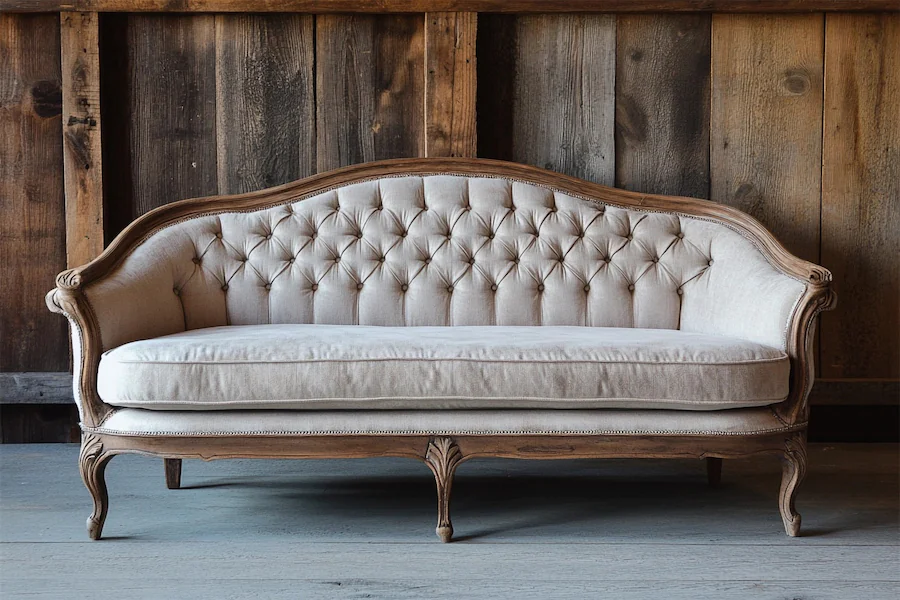French sofas, renowned for their elegance and craftsmanship, have evolved through various historical periods, each reflecting the artistic and cultural trends of its time.
History and Origins of French Sofas
The evolution of French sofas mirrors the nation’s rich history and artistic movements:
- Louis XIV Period (1643–1715): During the reign of Louis XIV, furniture was characterized by grandeur and opulence. The canapé, an early form of the sofa resembling two armchairs joined together, emerged during this era. These pieces featured lavish decorations, sculpted ornaments, and gilded bronze, reflecting the king’s preference for luxury.
- Louis XV Period (1715–1774): This era introduced more intimate and comfortable furniture designs. Sofas became more graceful with curved lines and intricate carvings. The chaise longue, an extended chair designed for reclining, gained popularity, embodying the period’s emphasis on comfort and elegance.
- Louis XVI Period (1774–1792): Neoclassicism influenced furniture design, leading to more geometric shapes and restrained ornamentation. Sofas from this period often featured straight lines and classical motifs, aligning with the renewed interest in Greco-Roman aesthetics.
Key Features of French Sofas
- Exquisite Craftsmanship: French sofas are celebrated for their meticulous construction and attention to detail, often handcrafted by skilled artisans.
- Luxurious Materials: High-quality woods such as walnut, cherry, and mahogany are commonly used, complemented by rich fabrics like silk, velvet, and brocade.
- Ornate Detailing: Intricate carvings, gilded accents, and decorative motifs, including floral patterns and classical elements, are hallmarks of French sofa design.
- Elegant Silhouettes: Distinctive shapes, such as cabriole legs, scrolled arms, and curved backs, contribute to the timeless appeal of French sofas.
Applications of French Sofas
- Formal Living Rooms: Ideal for adding a touch of sophistication and historical charm to traditional interiors.
- Boutique Hotels and Luxury Settings: French sofas enhance the ambiance of high-end establishments, offering guests an experience of elegance and comfort.
- Period-Inspired Interiors: Essential for recreating authentic historical settings or complementing antique collections.
Considerations When Choosing a French Sofa
- Authenticity: Determine whether you prefer an antique piece with historical value or a reproduction that captures the classic French style.
- Condition and Restoration: For antiques, assess the sofa’s condition and consider any restoration work needed to preserve its beauty and functionality.
- Space and Proportion: Ensure the sofa’s dimensions suit your space, keeping in mind that French sofas often have a commanding presence.
- Comfort vs. Aesthetics: While French sofas are undeniably beautiful, consider the comfort level, especially if the piece will be used frequently.
Conclusion
French sofas encapsulate centuries of artistic evolution, offering pieces that are not only functional but also works of art. Whether you seek to infuse a room with historical elegance or appreciate fine craftsmanship, a French sofa serves as a timeless addition to any interior.
